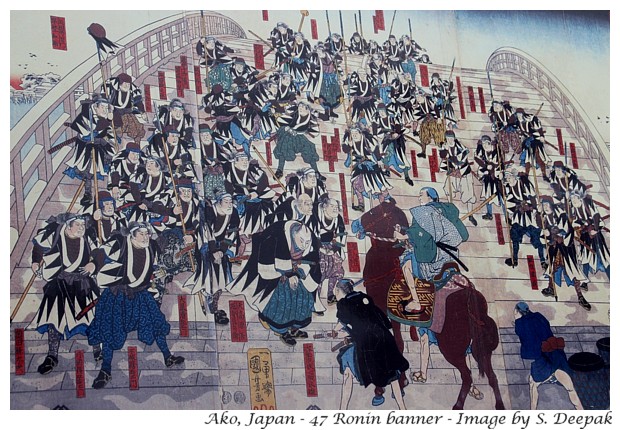Here. There. Everywhere?
Michael Brooks' article is titled "Here. There. Everywhere?" He starts with the Integrated Information Theory (IIT) proposed by American neuroscientist Giulio Tononi in 2004. Then he explains the ideas of Johannes Kleiner in Munich and Sean Tull in Oxford, which start from Tononi's ideas and refine them. Tononi had proposed that consciousness was a characteristic of information-exchange and if we could measure that, then we could also measure consciousness. Kleiner and Tull have attempted "to identify the necessary mathematical ingredients of IIT, splitting them into three parts. First is the set of physical systems that encode the information. Next is the various manifestations or “spaces” of conscious experience. Finally, there are basic building blocks that relate these two: the “repertoires” of cause and effect." According to Brooks, the significance of this work is the following:One consequence of this stimulus might be a reckoning for the notion, raised by IIT’s application to grid-shaped circuits, that inanimate matter can be conscious. Such a claim is typically dismissed out of hand, because it appears to be tantamount to “panpsychism”, a philosophical viewpoint that suggests consciousness is a fundamental property of all matter. But what if there is something in it?
To be clear, no one is saying that fundamental particles have feelings. But panpsychists do argue that they may have some semblance of consciousness, however fragmentary, that could combine to generate the various levels of consciousness experienced by birds or chimpanzees or us. “Particles or other basic physical entities might have simple forms of consciousness that are fundamental, but complex human and animal consciousness would be constituted by or emergent from this" ...
The idea that electrons could have some form of consciousness might be hard to swallow, but panpsychists argue that it provides the only plausible approach to solving the hard problem. They reason that, rather than trying to account for consciousness in terms of non-conscious elements, we should instead ask how rudimentary forms of consciousness might come together to give rise to the complex experiences we have.
Consciousness in Upanishads
Upanishads are ancient Hindu texts written in Sanskrit that often touch on the nature of reality. "Ishavasya" is one of the first Upanishads, dating back to different centuries before Christ. Its name - "Isha" (God) and Vasya (Lives in) - comes from its first line:It means that God pervades everything, both animate and inanimate. It is similar to the hypothesis of the mathematical theory proposed by Kleiner and Tull, as the text equates 'God' with 'Consciousness'.
The Upanishads define different levels of consciousness including Turiya or absolute consciousness. Turiya is the state of pure being in which awareness is present but the experiences are not accompanied by any thoughts, and it can't be described in words. This philosophy of non-dualness, the unity of our personal consciousness with that of the universal consciousness is known as Advaita philosophy. To me these ideas sound remarkably similar to the considerations of Kleiner and Tull.
Some Hindu texts differentiate between Parmatma or the universal consciousness and Jeevatma, the individual consciousness, where Parmatma is the ocean while Jeevatma are the rivers. There are other explanations about different levels of individual consciousness inside animate and inanimate world, which can be seen as "rudimentary consciousness" in Brooks' article.
The concept of Brahman or the universal consciousness is deeply rooted in Hinduism. It is expressed in words like Brahmand or the universe and Brahmin, the one who has spiritual knowledge. It is also used in the Beej Mantra to be chanted or meditated upon during Yoga and meditation, such as Swam Ho (I am), Aham Brahma (I am the life force), Aham Shivam (I am the eternal truth). Thus, if Kleiner and Tull's theory is about universal consciousness, then according to the ideas of Upanishad, it is also a theory of God.
If we think of God as universal consciousness pervading every object and being of this universe, perhaps we will learn to respect the environment, the rivers and the mountains, the trees, insects, birds and animals, and all the human beings.
The Upanishads define different levels of consciousness including Turiya or absolute consciousness. Turiya is the state of pure being in which awareness is present but the experiences are not accompanied by any thoughts, and it can't be described in words. This philosophy of non-dualness, the unity of our personal consciousness with that of the universal consciousness is known as Advaita philosophy. To me these ideas sound remarkably similar to the considerations of Kleiner and Tull.
Some Hindu texts differentiate between Parmatma or the universal consciousness and Jeevatma, the individual consciousness, where Parmatma is the ocean while Jeevatma are the rivers. There are other explanations about different levels of individual consciousness inside animate and inanimate world, which can be seen as "rudimentary consciousness" in Brooks' article.
The concept of Brahman or the universal consciousness is deeply rooted in Hinduism. It is expressed in words like Brahmand or the universe and Brahmin, the one who has spiritual knowledge. It is also used in the Beej Mantra to be chanted or meditated upon during Yoga and meditation, such as Swam Ho (I am), Aham Brahma (I am the life force), Aham Shivam (I am the eternal truth). Thus, if Kleiner and Tull's theory is about universal consciousness, then according to the ideas of Upanishad, it is also a theory of God.
If we think of God as universal consciousness pervading every object and being of this universe, perhaps we will learn to respect the environment, the rivers and the mountains, the trees, insects, birds and animals, and all the human beings.
Conclusions
I think that with greater scientific and technological understandings of the world, the role of religions will change in our lives. Today, for many persons religion continues to have a fundamental role in differentiating and defining right and wrong, good and bad, permissible and prohibited. However, for many others, religion only has a spiritual significance because it allows us to give a deeper meaning to our lives, but it does not have a prescriptive role.Questioning and refusing parts of our religious beliefs is essential for many of us. At the same time, our ideas about right and wrong are shaped more by concepts of human rights, equality of all human beings, and, love and respect for the nature. We can pick and choose aspects from different religions, which speak to our heart, but we are not bound by the walls separating them.
Note: The images used in this post are from an exhibition of Indian artists held in Delhi in January 2020 and are by Rashmi Malhotra (a mathematician and an artist) and Prince Chand.
*****


































